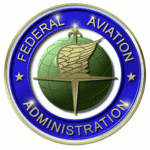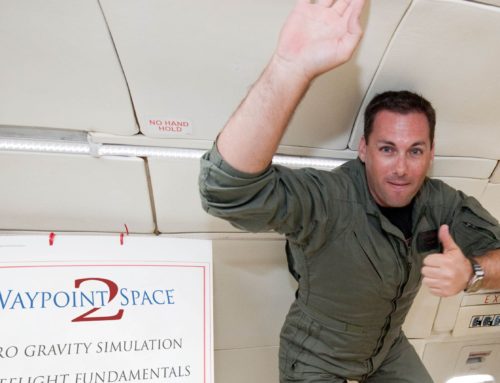By Doug Messier at Parabolic Arc.com – See the article here
I’ve been taking a look at the FAA’s “Draft Established Practices for Human Space Flight Occupant Safety” document since it was released, and I have to confess it has left me a bit puzzled.
It’s not the content that’s confusing; it’s actually very easy to understand. The problem has been figuring out how to make the material interesting. The document is drier than the Mojave in July.
 I finally realized that the most interesting aspects are probably the things the FAA has decided are not established practices to safeguard space travelers. Like pressure suits. And launch escape systems. And defined standards to make sure occupants are healthy enough to fly.
I finally realized that the most interesting aspects are probably the things the FAA has decided are not established practices to safeguard space travelers. Like pressure suits. And launch escape systems. And defined standards to make sure occupants are healthy enough to fly.
In other words, the very things that have been baked into national space programs for more than 50 years.
Welcome to the NewSpace Age. It sure ain’t your father’s space program.
The practices — developed after a series of eight telecons between the FAA, commercial space industry and other stakeholders — cover both suborbital and orbital spaceflight. The agency, which is approaching commercial spaceflight on an informed consent basis, does not lay down any hard and fast rules. However, the practices could form the basis for future rule making.
“AST has developed this document to share our thoughts about established practices for human space flight occupant safety. Ultimately, our goal is to gain the consensus of government, industry, and academia on established practices as part of our mandate to encourage, facilitate, and promote the continuous improvement of the safety of launch and reentry vehicles designed to carry humans. The outcome of this effort may also serve as a starting point for a future rulemaking project, although AST has no plans to start a rulemaking project in the near term.”
The document identifies two “levels of care” for those involved in commercial space flights.
“First, the occupants of commercial human spacecraft should not experience an environment during flight that would cause death or serious injury. This is a low bar, below the level of comfort that most space flight participants would want to experience.”
OK, so don’t kill your high net worth passengers. That’s good thinking.
“Second, the level of care for flight crew when performing safety critical operations is increased to the level necessary to perform those operations. For example, if planned translational forces will not result in serious injuries, but the flight crew needs lower forces in order to move their arms to perform a safety critical operation, then an increased level of care is reflected in this document. Note that we have assumed for purposes of this document that each member of the flight crew is safety critical.”
Don’t incapacitate the crew members who are flying the ship. More good advice.
The document goes on for dozens of pages about how to achieve these levels of safety. Protect occupants against excessive noise, acceleration and radiation. Check. Separating redundant systems so the failure of one doesn’t disable the other. Got it. Design failure tolerance into a vehicle. Absolutely.
“Failure Tolerance to Catastrophic Events
“a. The system should control hazards that can lead to catastrophic events with no less than single failure tolerance, except when redundancy adds complexity that results in a decrease in overall system safety, or when fault tolerance is not practicable as a system safety solution.
“b. When failure tolerance is not practical, such as for primary structure, pressure vessels, and thermal protection systems, an equivalent level of safety should be achieved through other means such as factors of safety, high reliability, and other design margin techniques.”
Most of the practices seem to be fairly commonsensical. Some, I’m guessing, are not.
But, as I mentioned, some of the things AST left out are the most interesting. Take spacesuits, the absence of which caused the deaths of three Soviet cosmonauts when their Soyuz 11 spacecraft suddenly depressurized prior to re-entry in 1971.
“Government human space flight experience has demonstrated that the ascent and reentry timeframes are the highest risk period for catastrophic failures. Given the hazard time to effect, having occupants wear pressure suits during ascent and reentry is beneficial to protect the occupants from a potential low pressure cabin environment.”
OK, the evidence is pretty strong that you would want pressure suits. So, what exactly is the problem?
“However, integrating pressure suits into a spacecraft design is not trivial, nor inexpensive. Because it may not be an ideal design trade in all cases, AST has not included pressure suits as an established practice. The conduct of an occupant survivability analysis is included in the document in order to identify measures, such as pressure suits, that may increase the occupants’ chance of survival in an emergency.”
So, it would be costly — especially if you’ve already designed your craft for a short sleeve environment and would have to perform an expensive retrofit. In that case, an operator might argue that the safety design of the vehicle is a better protection against sudden decompression, i.e., the “ideal design trade” explanation.
It is likely that the spacesuit optional approach will apply more to suborbital vehicles than orbital ones. NASA will almost certainly require the wearing of pressure suits for at least the launch and re-entry phases for any commercial crew services that it purchases.
Although protecting spaceflight participants and crew members from sudden pressure loss is not included in the practices, the FAA wants operators to protect them from bad air.
“Response to Contaminated Atmosphere
“In order to respond to a contaminated atmosphere, the vehicle should provide equipment and provisions to limit occupant exposure to the contaminated atmosphere such that occupants are protected from serious injuries, and safety critical operations can be performed successfully. The vehicle should:
“a. Provide breathable air and eye protection for each occupant;
“b. Provide voice communication between the flight crew and the ground crew; and
“c. Provide voice communication from the flight crew to the space flight participants.
“Rationale: Fire, toxic out gassing, and chemical leaks can degrade a spacecraft’s atmosphere such that occupants become casualties due to asphyxiation, chemical burns, or eye injury. In addition, such emergencies are difficult to manage by the flight crew due to the hazard of inhalation or eye injuries. The use of a self-contained breathing apparatus, for example, can protect occupants from the hazard, and allow the flight crew to manage the emergency. The ability to communicate orally with the ground and within the spacecraft while wearing emergency gear is important to respond to the event.”
So, the FAA wants everyone to be able to breath safely, but if the pressure drops suddenly and their blood begins to boil, they’re on their own. That level of protection is more akin to flying in an airliner at 30,000 feet than in a space plane soaring above the Karman line.
My best guess is this approach will last until there is a fatal accident resulting spacecraft decompression. The Soviets redesigned the Soyuz after their accident, reducing the crew size from three to two for many years afterward. NASA also mandated full pressure suits after the Challenger accident.
The FAA also is leaving it up to spaceflight operators to do their own screening of spaceflight participants to determine if they are healthy enough to safely fly. The reason: a lack of data.
“This document does not include any medical criteria that would limit who should fly in space due to medical conditions. There is little clear statistical evidence on the actual impact of space flight on the health of an occupant with pre-existing conditions. Medical screening of space flight participants is included as a practice to inform them of risks and to ensure they will not be a danger to other occupants.”
The FAA’s most logical omission involves launch escape systems, which it says are a significant enhancement to safety on orbital systems but are not practical for all vehicle designs. That is certainly true, particularly when it comes to suborbital space planes now under development. All the orbital systems being funded by NASA under the Commercial Crew Program incorporate launch escape systems for the crew vehicles.
The other really interesting part of the document involves the established practice for flight demonstrations before taking a passenger.
“Prior to any flight with a space flight participant, the integrated performance of a vehicle’s hardware, any software, and operational procedures should be demonstrated by successfully executing a flight of the vehicle’s design reference mission,” the document states. “Further flight demonstration should be conducted for any subsequent modifications that cannot be tested at the integrated system level on the ground.”
Now, note the language there: “successfully executing a flight of the vehicle’s design reference mission.” As in a single flight. One. Un. Uno. Ein. Odin. Ichi.
NASA is taking this approach with its Commercial Crew Program. Each of the companies competing in the program has planned a single demonstration flight to the International Space Station. Providing the flight goes well, a company would be in a position to provide commercial transport services to the space agency.
The single demonstration flight makes sense in this situation. The companies are working extremely closely with NASA, with the space agency endeavoring to transfer as much of its human spaceflight expertise to the private sector. Procurement of flight services will also be done under strict Federal Acquisition Regulation (FAR) procedures.
Private reusable suborbital vehicles are being developed in a very different manner. It is almost certain that these providers will conduct more than one test flight with the profile they will use to fly paying customers. They will want to fully test out all the systems on a repeated basis before launching commercial service. Yet, the FAA is not recommending any set number of flights beyond one.
This approach illustrates the informed consent regime in which passengers acknowledge the risks they are taking in climbing aboard these new vehicles. It is a significant departure from the FAA’s approach to commercial aviation. The agency certifies commercial aircraft, a costly and time consuming process that requires thousands of hours of flight time before passengers can fly. However, the FAA will license manned commercial space vehicles, which is a much looser standard.
So, that’s my review of the FAA’s draft document on established practices. It turned out to be a bit more interesting than I thought. I hope you found it informative as well.

